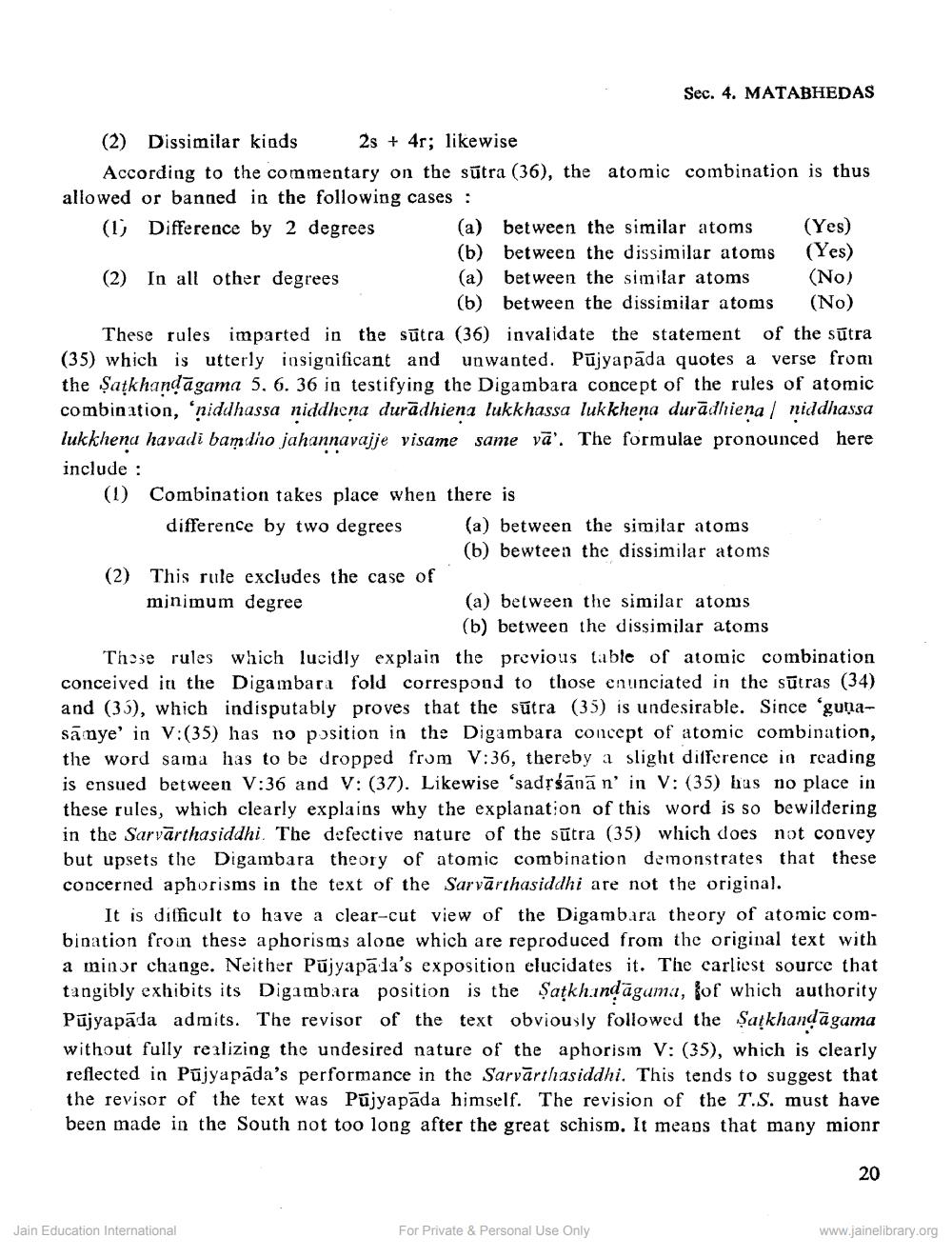________________
Sec. 4. MATABHEDAS
(2) Dissimilar kinds 2s + 4r; likewise
According to the commentary on the sūtra (36), the atomic combination is thus allowed or banned in the following cases : (1) Difference by 2 degrees (a) between the similar atoms (Yes)
(b) between the dissimilar atoms (Yes) (2) In all other degrees
(a) between the similar atoms (No)
(b) between the dissimilar atoms (No) These rules imparted in the sūtra (36) invalidate the statement of the sūtra (35) which is utterly insignificant and unwanted. Pūjyapāda quotes a verse from the Satkhandāgama 5. 6. 36 in testifying the Digambara concept of the rules of atomic combination, 'niddhassa niddhena durādhiena lukkhassa lukkhena durādhiena / niddhassa lukkhena havadi bamdro jahannavajje visame same vā'. The formulae pronounced here include : (1) Combination takes place when there is difference by two degrees (a) between the similar atoms
(b) bewteen the dissimilar atoms (2) This rule excludes the case of minimum degree
(a) between the similar atoms
(b) between the dissimilar atoms These rules which lucidly explain the previous table of atomic combination conceived in the Digambara fold correspond to those enunciated in the sūtras (34) and (35), which indisputably proves that the sūtra (35) is undesirable. Since ‘guņasānye' in V:(35) has no position in the Digambara concept of atomic combination, the word sama has to be dropped from V:36, thereby a slight difference in reading is ensued between V:36 and 7: (37). Likewise 'sadrśānā n' in V: (35) has no place in these rules, which clearly explains why the explanation of this word is so bewildering in the Sarvārthasiddhi. The defective nature of the sūtra (35) which does not convey but upsets the Digambara theory of atomic combination demonstrates that these concerned aphorisms in the text of the Sarvārthasiddhi are not the original.
It is difficult to have a clear-cut view of the Digambara theory of atomic combination from these aphorisms alone which are reproduced from the original text with a minor change. Neither Pūjyapāla's exposition elucidates it. The earliest source that tangibly exhibits its Digambara position is the Şațkh.indāguma, fof which authority Pūjyapada admits. The revisor of the text obviously followed the Satkhandagama without fully realizing the undesired nature of the aphorism V: (35), which is clearly reflected in Pujyapada's performance in the Sarvārthasiddhi. This tends to suggest that the revisor of the text was Pūjyapāda himself. The revision of the T.S. must have been made in the South not too long after the great schism. It means that many mionr
20
Jain Education International
For Private & Personal Use Only
www.jainelibrary.org




